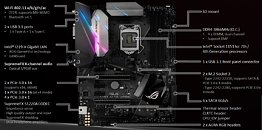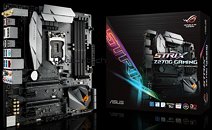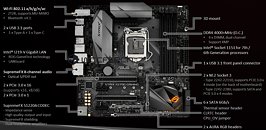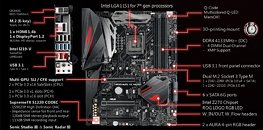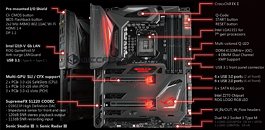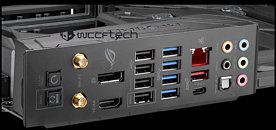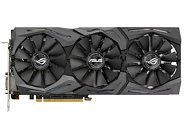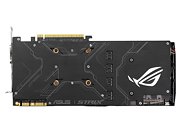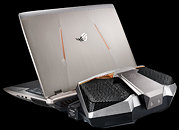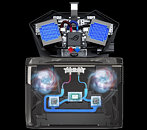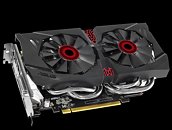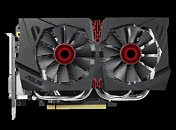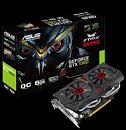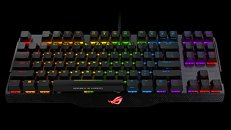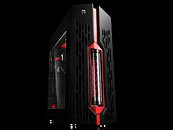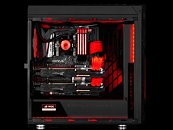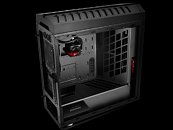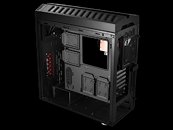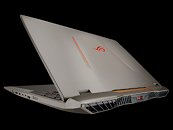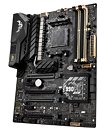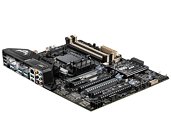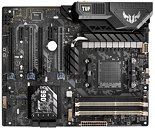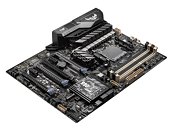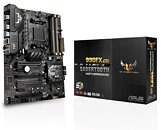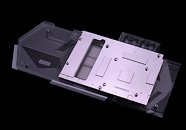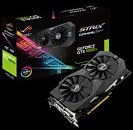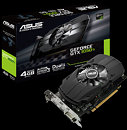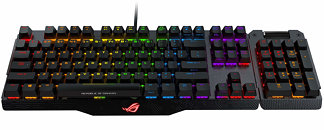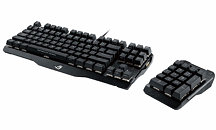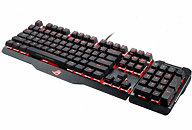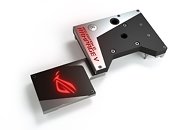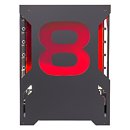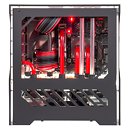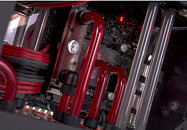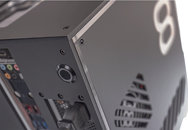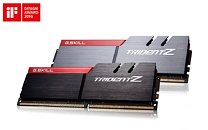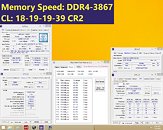
ASUS ROG STRIX Z270F Gaming Motherboard Details Surface
Continuing the trend of revealing ASUS' ROG lineup of motherboards based on the Z270 chipset, and zipping down the product line, comes the ROG STRIX Z270F Gaming, which also sports the standard ATX form factor. The motherboard features an all around solid design with an impressive metallic black / silver color scheme. The LGA 1151 socket supports the latest 6th and 7th generation Intel Core processors. ASUS went with an aggressive heatsink design that features their AURA RGB technology for a full LED illuminated color showcase. In terms of features, the ROG STRIX Z270F Gaming continues the trend of intelligent cost-cutting so as to achieve a product with an (expectedly) lower price-point. Compared to the ROG STRIX Z270E, this mobo cuts on the 2×2 MU-MIMO 802.11ac WI-FI on the back I/O, and the USB front header is downgraded to a 2.0 solution.
The ASUS ROG Strix Z270F comes with a 8+2+1 Phase Digital power design that features 10K black metallic capacitors, MicroFine Alloy Chokes, NexFET PW (Power) block MOSFET and DIGI+ Power Control Utility for real-time adjustment. All of these components are part of the new ASUS Extreme Engine Digi+ technology that improves CPU stability and overclocking. Power is fed through a single 8-Pin connector.
The ASUS ROG Strix Z270F comes with a 8+2+1 Phase Digital power design that features 10K black metallic capacitors, MicroFine Alloy Chokes, NexFET PW (Power) block MOSFET and DIGI+ Power Control Utility for real-time adjustment. All of these components are part of the new ASUS Extreme Engine Digi+ technology that improves CPU stability and overclocking. Power is fed through a single 8-Pin connector.



